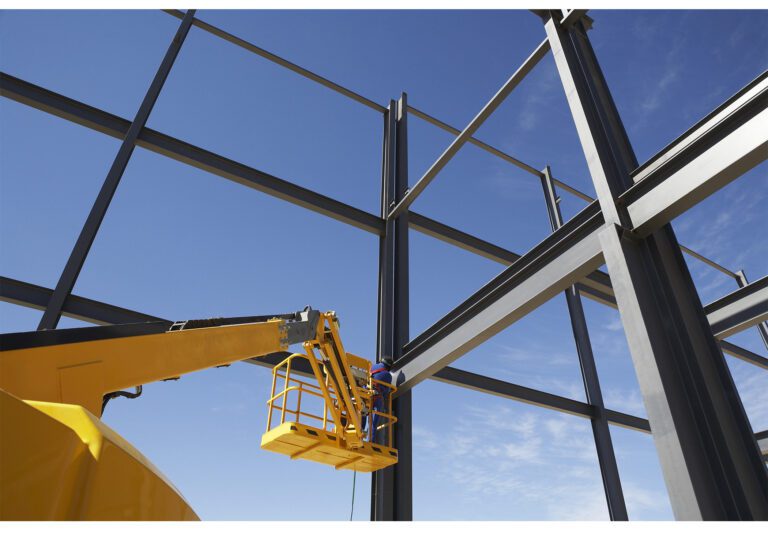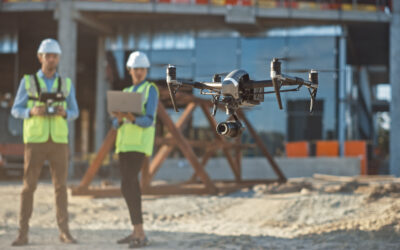Lift Planning Software
The construction industry has embraced technological advancements, with crane lift planning software at the forefront of this evolution. From the early days of Computer-Aided Design (CAD) to the current use of drones for site surveying, technology has been pivotal in enhancing construction methodologies. Particularly in crane lift planning, the adoption of sophisticated crane lift planning software is now considered an industry benchmark. This article will explore the advantages, features, and functionalities of some of the top crane lift planning software available in the market.
1. Introduction to Lift Planning Software
Specialized 3D planning tools, known as crane lifting plan software, are revolutionizing how engineers and construction professionals approach and carry out crane lifts with precision and efficiency. These software solutions offer a dynamic 3D environment for users to craft, adjust, and visualize crane lifting plan scenarios, greatly boosting safety, efficiency, and productivity at the construction site.
2. The Evolution of Lift Planning
The era of manually creating lifting plan templates with pen and paper has been replaced by the efficiency of lift planning software. The once cumbersome task of sifting through load charts for crane capacity is now streamlined by these advanced tools, accelerating the crane lift planning process while enhancing safety and efficiency.
3. Decoding the Features of Lift Planning Software
3.1 Comprehensive Crane Libraries
A key feature of lift planning software is the inclusion of comprehensive crane libraries, which provide detailed crane load charts for an array of crane models from various manufacturers, complete with distinct specifications and capabilities. Users can pinpoint the ideal crane for their project and simulate lift scenarios within a 3D environment.
3.2 Real-time Calculations and Warnings
Lift planning software is engineered to perform real-time lift calculations of essential parameters such as ground bearing pressures and load capacities, along with determining centres of gravity. They also proactively issue alerts for lift safety concerns like two blocking and angle limits, ensuring maximum safety during crane operations.
3.3 Interactive 3D Environment
These software solutions offer an immersive 3D plan and interactive environment where users can envision crane lifts prior to execution. This capability is not only instrumental in meticulous planning but also serves as a critical risk assessment tool to pinpoint potential hazards and impediments that could interfere with the lift operation.
4. Market-leading Lift Planning Software
4.1 LiftPlanner
LiftPlanner is a renowned planner program that provides a tailored 3D crane and rigging planning environment. It includes features for constructing elements within the lift setting, such as vessels and towers, and is compatible with AutoCAD 2018 to 2024 and Windows 10/11 Professional. This compatibility makes it an adaptable and sought-after download planner for lift planning.
4.2 Crane Planner 2.0
The Liebherr Crane Planner 2.0 is an industry-leading lift planning software that stands out with its attractive, three-dimensional user interface and precise machine data. This comprehensive calculator 2.0 tool is a go-to for construction professionals, determining essential metrics such as ground bearing pressures, ground force, loads, and centres of gravity for a well-rounded lift planning experience.
4.3 KranXpert
KranXpert, a user-friendly lift planning software, streamlines the planning process with its intuitive interface and swift calculation speeds. It’s a reliable resource for crafting lift plan templates in the UK, ensuring even the most complex crane lifts are planned with ease.

4.4 3D Lift Plan
3D Lift Plan is a user-friendly lift planning program that boasts data and graphics for over 900 cranes, making it a top choice for crane operator training. Its simplicity and ease of use make it a preferred tool among crane operators and rigging professionals looking to create detailed 3D plans.
4.5 CRANEbee
CRANEbee is a software solution that not only aids in the efficient selection of lifting equipment in compliance with lifting equipment regulations but also enables professionals to impress clients with meticulous lift planning.
5. The Benefits of Using Lift Planning Software
5.1 Enhanced Safety
One of the key advantages of using lift planning software is the enhanced safety it introduces to crane operations. By simulating lift scenarios in a 3D environment, the software facilitates thorough site analysis and the development of emergency plans, allowing for the identification and mitigation of potential risks before the actual lift, thereby significantly reducing the likelihood of accidents on the construction site.
5.2 Increased Efficiency
Lift planning software optimizes the planning process, conserving valuable time and resources for project planning. These software solutions provide real-time calculations and visualizations, enabling construction professionals to plan and execute lifts with greater efficiency.
5.3 Improved Accuracy
Employing lift planning software leads to more accurate and reliable lift plans. Thanks to the software’s advanced crane simulation capabilities, it can calculate critical parameters and offer alerts for potential risks, ensuring the creation of precise lift plans.
6. The Future of Lift Planning
Lift planning is a critical aspect of construction, manufacturing, and logistics, involving the safe and efficient movement of heavy loads. As we look to the future, lift planning is expected to evolve with advances in technology and changes in industry practices. Here are some anticipated developments in lift planning:
Technological Advancements
- Automation and Robotics: Automated lifting equipment and robotics may play a larger role, allowing for more precise and safer lift operations.
- Advanced Simulation Software: Enhanced 3D modeling and simulation software will enable more accurate and detailed planning of lifts, accounting for every variable.
- IoT and Telematics: Integration of the Internet of Things (IoT) and telematics will allow for real-time monitoring and adjustments during lifts, enhancing safety and efficiency.
Safety Enhancements
- AI and Machine Learning: AI could predict potential hazards by analyzing previous lift data, improving safety protocols and reducing the risk of accidents.
- Wearable Technology: Equipment operators and site workers may use wearable tech to monitor health vitals and environmental conditions, promoting a safer work environment.
Sustainability Considerations
- Electric and Hybrid Lifting Equipment: The push for sustainability will lead to the adoption of electric and hybrid engines in lifting equipment to reduce emissions.
- Material Innovations: The use of lighter, stronger materials for lifting gear and load-bearing structures will enable the handling of heavier loads with less energy.
Workforce Transformation
- Skills Development: As technology integrates into lift planning, the workforce will need training in software, automation, and data analysis.
- Remote Operation: Operators may control lifts remotely using virtual reality (VR) or augmented reality (AR), which could lead to operations being conducted from off-site locations.
Regulatory Evolution
- Stricter Regulations: There may be an introduction of stricter safety and environmental regulations governing lifting operations, driving innovation in lift planning.
- International Standards: A move towards unified international standards for lift planning could facilitate better safety and interoperability across borders.
Integration with Broader Systems
- Building Information Modeling (BIM): Lift planning will likely become more integrated with BIM systems, allowing for better coordination with the overall construction or manufacturing process.
- Supply Chain Management: Lift planning could be closely tied to supply chain management systems, optimizing the flow of materials to and from the lifting site.

Customization and Flexibility
- Modular Lifting Equipment: There may be a trend towards modular lifting equipment that can be customized for specific tasks, offering flexibility and cost savings.
- Adaptive Lift Planning: Advanced algorithms could enable adaptive lift planning that can adjust to changing conditions and requirements in real-time.
Enhanced Communication and Collaboration
- Collaborative Platforms: Cloud-based collaborative platforms will enable stakeholders to share information and make joint decisions on lift planning, regardless of their location.
As the field of lift planning continues to advance, we can expect a greater emphasis on safety, efficiency, sustainability, and integration with other technological trends. However, it’s important to note that my knowledge is based on information available until April 2023, and future developments may differ from those predicted here.
7. Conclusion
The advent of lift planning software has undoubtedly revolutionised the construction industry, bringing about enhanced safety, increased efficiency, and improved accuracy. As technology continues to evolve, we can expect these software solutions to become even more sophisticated, paving the way for a safer and more efficient construction industry, underpinned by robust crane safety training.
We’d Love To Hear From You
contact us
Office Hours
Mon- Fri: 8am- 5pm
Get In touch
07803 808093
[email protected]
Take the first step, we
will take care for the rest




0 Comments